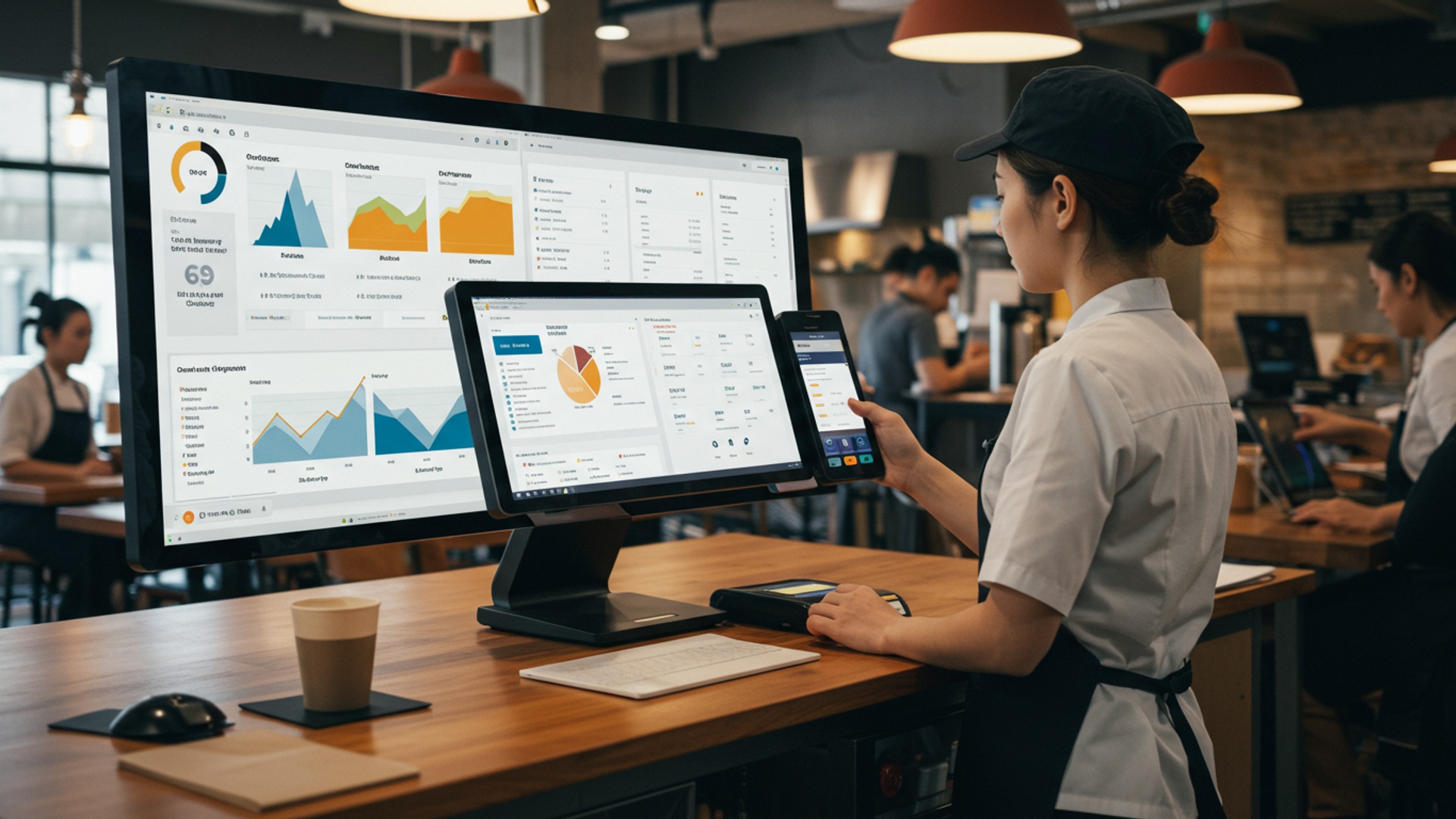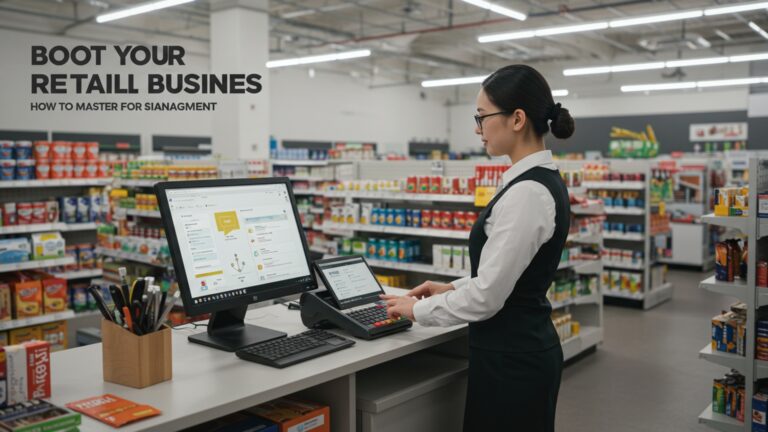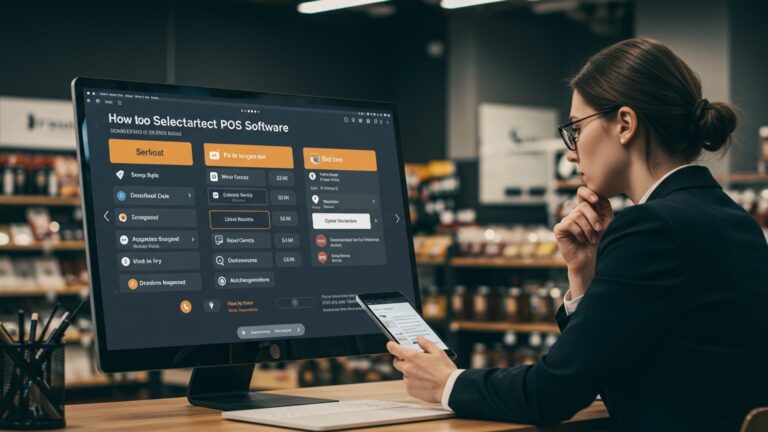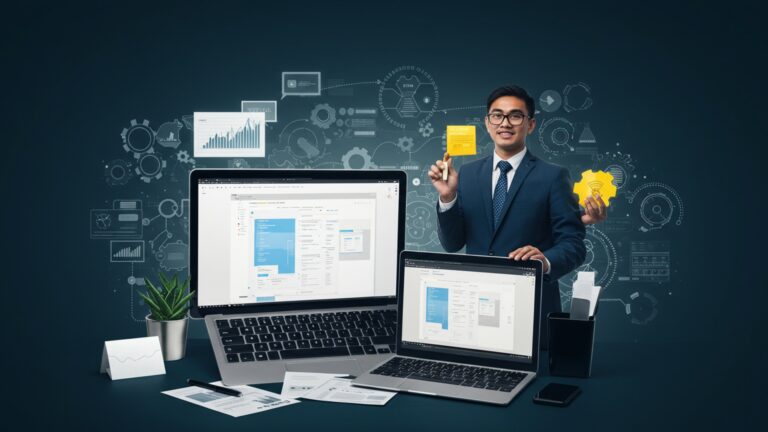Optimize Your Restaurant Operations How to Use POS Software Effectively
The competitive restaurant industry no longer thrives on culinary excellence alone; it demands operational precision and data-driven agility. Manual processes and siloed systems often lead to inventory discrepancies, order errors. missed opportunities for guest engagement. Modern restaurant POS software transcends basic transaction processing, evolving into a strategic operational hub. This technology, reflecting recent advancements in cloud integration and mobile capabilities, facilitates real-time inventory management, streamlined tableside ordering. robust analytics for menu engineering and staff optimization. Effectively harnessing these sophisticated systems transforms operational challenges into tangible pathways for enhanced profitability and consistently superior guest experiences.

Understanding Restaurant POS Software: More Than Just a Cash Register
In the fast-paced world of gastronomy, efficiency is paramount. Gone are the days when a simple cash register sufficed for managing a bustling restaurant. Today, the cornerstone of any successful food establishment is robust restaurant POS software. POS, which stands for Point of Sale, refers to the place where a transaction occurs. Modern restaurant POS software, But, is far more than just a place to process payments; it’s an integrated system designed to streamline nearly every aspect of your restaurant’s operations, from order taking to inventory management and customer relations.
Historically, a POS system might have been a standalone terminal managing basic sales. The evolution has been rapid and dramatic. What began as a tool for ringing up sales has transformed into a comprehensive management suite, often cloud-based, accessible from multiple devices. capable of handling complex operational challenges. This technological leap has empowered restaurants to move beyond manual processes, reducing errors, speeding up service. providing invaluable insights into their business performance.
Key Features of Effective Restaurant POS Software
To truly optimize your restaurant operations, understanding the core functionalities of advanced restaurant POS software is crucial. These features work in concert to create a seamless operational flow:
- Order Management
- Inventory Management
- Customer Relationship Management (CRM)
- Reporting and Analytics
- Employee Management
- Payment Processing
- Kitchen Display Systems (KDS) Integration
This is the heart of any POS system. It encompasses everything from taking orders at the table (often via handheld devices), managing takeout and delivery orders, customising items, splitting checks. sending orders directly to the kitchen display system (KDS) or printers. Advanced systems can integrate with third-party online ordering platforms and delivery services, consolidating all orders into one place.
One of the most significant cost-saving features, inventory management tracks every ingredient from receipt to plate. It monitors stock levels, generates alerts for low stock, helps manage supplier relationships. can even provide real-time food cost analysis. This minimizes waste and prevents stockouts.
Modern POS systems can store customer data, track purchase history, manage loyalty programs. facilitate targeted marketing campaigns. Understanding your customers’ preferences allows for personalized service and effective promotions.
This feature transforms raw sales data into actionable insights. Restaurant owners can generate detailed reports on sales trends, peak hours, popular menu items, employee performance. more. These insights are vital for making informed decisions about staffing, menu engineering. marketing strategies.
From time clock functionality and shift scheduling to payroll integration and performance tracking, the POS helps manage your most valuable asset: your staff. It can monitor sales per employee, track tips. streamline payroll processes.
Securely handling various payment methods—cash, credit/debit cards, mobile payments (e. g. , Apple Pay, Google Pay). even gift cards—is fundamental. EMV compliance and PCI DSS security standards are critical components here to protect sensitive financial data.
A KDS digitally displays orders in the kitchen, replacing paper tickets. It improves communication, reduces errors, speeds up order preparation. helps manage cook times, especially for complex orders or multiple stations.
Strategic Implementation: Getting Started with Your Restaurant POS Software
Choosing and implementing the right restaurant POS software is a strategic decision that requires careful planning. It’s not just about buying a system; it’s about integrating a new operational philosophy.
Choosing the Right System
The market offers a variety of solutions. A key decision point is between cloud-based and on-premise systems:
| Feature | Cloud-Based POS | On-Premise POS |
|---|---|---|
| Accessibility | Access from anywhere with internet, on any device (tablet, smartphone). | Limited to the physical location where the server is installed. |
| Cost | Subscription-based (monthly/annually), lower upfront cost. | Higher upfront cost for hardware and software licenses. |
| Maintenance | Managed by the vendor, automatic updates. | Requires in-house IT support or external contractor. |
| Data Backup | Automated cloud backups, disaster recovery. | Manual or locally managed backups, vulnerable to local incidents. |
| Scalability | Easily scalable, add/remove terminals as needed. | Can be complex and costly to scale up. |
| Integration | Often designed for easy integration with other cloud services. | Integration can be more challenging and proprietary. |
Consider your restaurant’s size, budget, number of locations. specific needs. Look for systems that offer robust integration capabilities with existing accounting software, reservation platforms. third-party delivery services.
Data Migration and Setup
Once you’ve selected your system, meticulous data migration is essential. This involves inputting your entire menu, pricing, inventory items, employee details. customer databases. This phase requires attention to detail to ensure accuracy from day one. Many POS providers offer setup assistance, which can be invaluable.
Staff Training: The Human Element of Technology
Even the most advanced restaurant POS software is only as effective as the people using it. Comprehensive staff training is non-negotiable. Schedule dedicated training sessions, provide hands-on practice. create an environment where staff feel comfortable asking questions. A phased rollout—starting with a few key staff members or during slower periods—can help identify and resolve issues before they impact peak service. Ongoing training and refreshers are also vital as features are updated or new staff join the team. A well-trained team can leverage the POS to its full potential, while a poorly trained one can negate many of its benefits.
Optimizing Operations with Your Restaurant POS Software
Leveraging your restaurant POS software effectively means integrating it into every facet of your daily operations to achieve tangible improvements. Here’s how:
Streamlining Order Taking and Service
Modern POS systems, especially those with handheld devices, revolutionize the order process. Servers can take orders tableside, send them directly to the kitchen. even process payments without leaving the customer’s side. This significantly reduces walking time, minimizes order errors. speeds up table turnover. For instance, “The Bistro,” a busy downtown eatery, implemented handheld POS devices and integrated them with a KDS. They reported a 20% reduction in order processing time and a 30% decrease in incorrect orders within the first month, leading to higher customer satisfaction and increased table turns during lunch rush.
Mastering Inventory Control and Cost Management
Effective inventory management within your restaurant POS software is a game-changer for profitability. By accurately tracking ingredients, you can identify waste, prevent theft. optimize purchasing. The system can automatically deduct ingredients from inventory as dishes are sold and alert you when stock levels are low. Consider “Mama Mia’s Pizzeria,” which struggled with inconsistent food costs. By utilizing the inventory features of their POS, they were able to track every ounce of cheese and pepperoni. This led to a 15% reduction in food waste and helped them negotiate better deals with suppliers based on accurate usage data. Actionable takeaway: Regularly reconcile physical inventory with POS data to catch discrepancies early and adjust ordering patterns.
Enhancing Customer Experience and Loyalty
Your POS system is a powerful tool for building stronger customer relationships. By tracking customer preferences and purchase history, staff can offer personalized recommendations or remember a regular’s favorite drink. Loyalty programs, easily managed through the POS, incentivize repeat business. For example, a customer visiting “The Daily Grind” coffee shop might have their usual latte order pop up when their loyalty card is scanned, making the transaction faster and more personal. This creates a sense of recognition and value, driving customer retention. One study by Accenture found that 75% of consumers are more likely to buy from a brand that offers personalized experiences.
Boosting Business Intelligence with Reporting and Analytics
The reporting capabilities of advanced restaurant POS software provide an unparalleled look into your business’s health. You can examine sales data by hour, day, server, or menu item to identify trends. This intelligence is crucial for:
- Menu Engineering
- Staffing Optimization
- Marketing Strategies
Identify your most profitable and popular dishes. your least. Adjust pricing, ingredients, or remove underperforming items.
grasp peak hours to schedule staff more effectively, reducing labor costs during slow periods and ensuring adequate coverage during busy times.
Pinpoint which promotions are working, grasp customer demographics. tailor future campaigns for maximum impact.
A restaurant owner recently shared how their POS reports revealed that their “Chef’s Special Pasta” had high sales but very low-profit margins due to expensive ingredients. They adjusted the recipe slightly and increased the price by a small margin, boosting profitability without deterring sales.
Improving Staff Efficiency and Accountability
Employee management features within the POS streamline operations and improve accountability. The time clock function ensures accurate payroll, while sales performance reports can motivate staff through friendly competition or identify areas for additional training. When staff are empowered with efficient tools, they can focus more on customer service and less on manual tasks.
Seamless Integration with Other Systems
The true power of modern restaurant POS software lies in its ability to integrate with other critical business systems. This includes:
- Accounting Software
- Reservation Systems
- Delivery Platforms
Automatically sync sales data, reducing manual data entry and errors.
Link customer details from reservations to their dining experience and order history.
Consolidate orders from Uber Eats, DoorDash, etc. , into a single system, simplifying kitchen workflow and dispatch.
This holistic approach creates a unified ecosystem that eliminates data silos and provides a single source of truth for your entire operation.
Addressing Common Challenges and Best Practices
While the benefits of restaurant POS software are immense, effective utilization also involves proactively addressing potential challenges:
- Data Security and PCI Compliance
- Regular Software Updates and Maintenance
- Backup Strategies
- Continuous Staff Buy-in and Training
- Leveraging Customer Feedback
Given the sensitive payment insights handled, ensuring your POS system is PCI DSS compliant and employs robust security measures (encryption, tokenization) is non-negotiable. Regular security audits and staff training on data handling best practices are essential.
Keep your POS software updated to benefit from new features, security patches. performance improvements. Most cloud-based systems handle this automatically. on-premise solutions require scheduled maintenance.
Even with cloud systems, understanding your data backup and recovery protocols is crucial. For on-premise systems, implement a robust, regular backup schedule to prevent data loss.
Technology evolves. so should your staff’s knowledge. Foster a culture of continuous learning and ensure new hires are thoroughly trained on the system. Address resistance to change by highlighting how the POS simplifies their work, not complicates it.
Pay attention to customer feedback related to the ordering or payment process. This can highlight areas where your POS setup might be causing friction, allowing you to make adjustments and improve the overall experience.
Future Trends in Restaurant POS Software
The evolution of restaurant POS software is ongoing, with exciting innovations on the horizon that promise even greater operational efficiency and personalized customer experiences:
- AI and Machine Learning for Predictive Analytics
- Voice Ordering and AI-Powered Kiosks
- Advanced Personalization
- Robotics Integration
Imagine a POS system that can predict peak demand periods, suggest optimal staffing levels, or even recommend menu adjustments based on real-time sales data, weather patterns. local events. This level of predictive analytics will revolutionize inventory and labor management.
As voice technology matures, we may see more integration of voice commands for order placement, both by customers at self-service kiosks and by staff. AI-powered kiosks can offer personalized upsells and cross-sells based on order history.
Beyond basic loyalty programs, future POS systems will leverage deeper customer data to offer hyper-personalized experiences, from custom menu recommendations to dynamic pricing based on individual preferences and purchase frequency.
While still nascent, some advanced POS systems are beginning to integrate with robotic kitchen assistants for tasks like pouring drinks or prepping simple dishes, further automating and standardizing back-of-house operations.
Conclusion
Beyond merely processing transactions, your restaurant’s POS system is a strategic asset waiting to be fully unleashed. To truly optimize operations, proactively dive into the analytics; for instance, identifying peak hours through sales reports can dramatically refine staff scheduling and reduce unnecessary labor costs. My personal tip for restaurant owners is to conduct weekly deep-dives into your sales data, not just for revenue figures. to uncover customer ordering patterns that can inform menu engineering or even targeted promotions, a recent trend I’ve observed boosting average check sizes. Don’t let your investment sit idle; empower your team through continuous training on advanced features like integrated online ordering or loyalty program management. Imagine leveraging your POS to seamlessly manage QR code table ordering, enhancing efficiency during a rush while capturing valuable customer preferences. By actively engaging with your POS software, adapting to its capabilities. using its insights to make informed decisions, you’re not just running a restaurant – you’re building a smarter, more resilient. ultimately, more profitable culinary venture. Embrace this powerful tool to transform challenges into triumphs.
More Articles
7 Essential Features Your Restaurant Billing Software India Needs to Thrive
How to Choose the Best Cloud POS for Your Indian Restaurant 5 Tips
Maximize Profit Learn 7 Smart Inventory Management Strategies for Indian POS
How to Select and Implement POS Software A Comprehensive Guide for Business Success
FAQs
Why should my restaurant bother with POS software?
It’s more than just ringing up sales! A good POS system streamlines everything from taking orders and managing inventory to tracking staff hours and analyzing sales trends. It helps you run a smoother, more profitable business by reducing errors and giving you valuable insights into your operations.
How can POS make my customer service quicker and better?
Think faster order entry, accurate bill splitting. quicker payment processing. Your servers can take orders right at the table, send them directly to the kitchen. get food out faster. This means happier customers, fewer mistakes. potentially more table turns for your restaurant.
Does POS really help with all the tricky inventory stuff?
Absolutely! It automates a lot of the grunt work. You can track ingredients in real-time, get alerts when stock is low. even identify waste patterns. This helps you order smarter, reduce spoilage. keep your food costs under control.
Can I use POS to figure out what dishes are actually popular and profitable?
Definitely. Your POS collects sales data for every item. You can run reports to see your bestsellers, slow movers. even peak sales times. This insight is gold for optimizing your menu, creating effective specials. making informed decisions about pricing.
What about managing my employees with this software?
Many POS systems have features for staff management. You can track clock-ins and outs, manage shifts, monitor individual sales performance. even simplify tip distribution. It streamlines payroll preparation and helps you ensure adequate staffing during busy periods.
Is it complicated to teach my team how to use a new POS system?
Modern POS software is designed to be user-friendly with intuitive interfaces. While there’s always a learning curve with new tech, most systems offer good training resources. with a little practice, your team will likely pick it up quickly. Choosing a system with a simple layout helps a lot.
How does using POS software effectively actually save my restaurant money in the long run?
By reducing errors (like wrong orders or miscalculations), minimizing food waste through better inventory management, optimizing staff scheduling to avoid overstaffing. providing data to make smarter decisions about your menu and promotions, a POS system can lead to significant cost savings and increased revenue over time.






